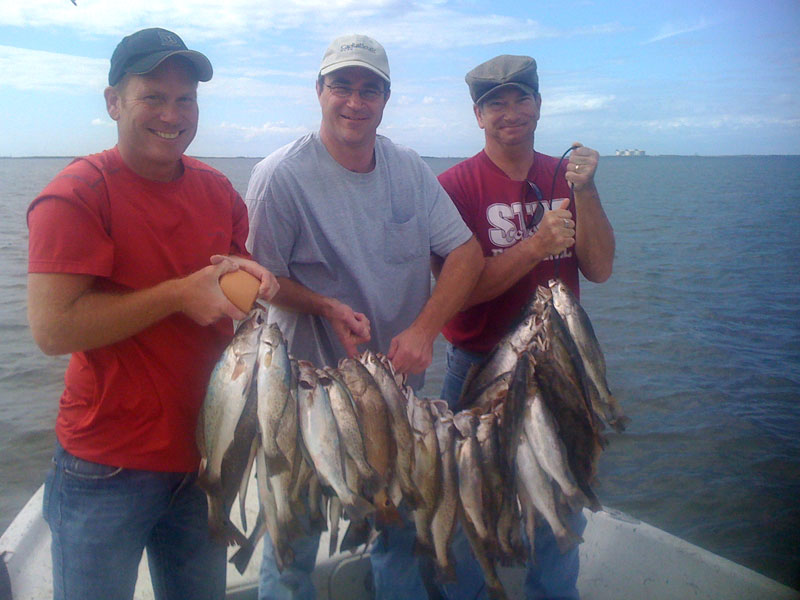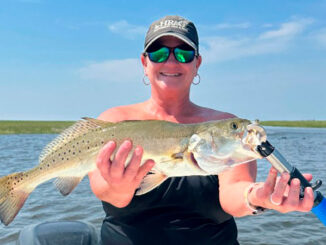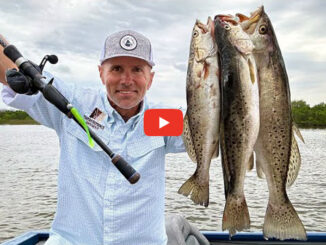
There is a certain amount of guilt I feel writing about fishing when our neighbors, family and friends are suffering from the aftermath of a massive hurricane.
Last hurricane season, it was my area that suffered the wrath of the Gulf; thus far, we have been spared this year. To live on the Gulf coast, you have got to be resilient, and the people of Louisiana most definitely are. We tolerate these storms because we love living on the Gulf coast and the opportunities that living here offers, including fishing.
We are quickly approaching the absolute best time to be on the water in southwest Louisiana and southeast Texas. Both Sabine Lake and Lake Calcasieu absolutely come alive during the fall. Shrimp pour out of the marshes in droves, with trout, redfish and flounder hot on their tails. Birds will line the banks and fill the sky for the opportunity to nab a fleeing shrimp. As a young boy, my dad taught me to watch and learn from the birds’ behavior to locate fish on Sabine Lake. If egrets were lining the shoreline, he would say flounder were there; he keyed on that and still does.
If the birds are on the banks, they are there for a reason: they have located something to eat. During the fall, that food source is primarily shrimp. If the shrimp are there, you can count on predator fish being close by. Plenty of times, we have located flounder and redfish solely based on the activity of egrets and other shorebirds lining the banks of the Sabine.
Primary areas are typically close by to a marshy outflow or bayou. Coffee Ground Cove and Game Warden Cove are a couple of key areas of focus on Sabine Lake. They are well known, and well known for a reason: they consistently produce fishing.
Top baits
Although Gulp! has become incredibly popular, it comes in a rather distant second to a twin-tail, white Mister Twister grub tipped with shrimp. We fish them on 1/8- to 1/4-ounce jigheads and bounce them off the bottom. Flounder and redfish can’t resist them. Your pocketbook will thank you as well; Mister Twister grubs are considerably less expensive than Gulp! and last longer.
Seagulls are the other main birds that help locate fish during the fall, especially speckled trout. The bird activity typically really gets hot and heavy during October and can last through December and into January. Locating quality trout under birds can sometimes be a different story. A general rule of thumb is, if you can hear the slurping, sucking sound of trout eating shrimp on the surface, they are normally better quality fish. Also, if you see foam rings on the surface from trout eating shrimp they are normally keeper fish or better as well.
School trout are generally all very similar in size. If you catch a handful that are undersized, it’s probably best to move on to the next school to look for better fish. But if you are catching better fish, do your best to stay with that school, as they all will likely be close to the same size.
Baits that mimic shrimp are your best bets. Smaller topwaters and shorter grubs are my go-to lures. Zara Spook Jrs. and Bass Assassin Sea Shads can be deadly. Be prepared to go through a good amount of plastics if you get on a good bite. When they’re thick, the bite often comes as soon as the lure hits the water.
Turner’s Bay and West Cove on Calcasieu, aka Big Lake, are areas with some high bird activity during the fall. Between Willow Bayou and Johnson’s Bayou on Sabine are as well. Keep your eyes open and let the birds assist you in finding a good bite during the fall. You will be hooked!
Capt. Adam Jaynes can be reached at 409-988-3901, on Facebook or at justfishsabine.com.


